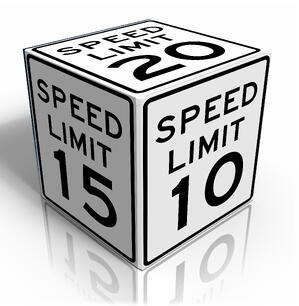
*Note: Since this article was published, 802.11ac wave 2 has become the new higher standard. Read more about 802.11ac wave 2 here.
Have you started looking towards WiGig WiFi speeds yet? 802.11ac is nice, but 802.11ad is going to blow it out of the water in terms of speeds.
802.11ad, also called WiGig, is the next generation of networking hardware, and it's scheduled to first come out next year. It's big selling point will undoubtedly be the pure, raw speed it can achieve. The slowest WiGig access points will be as fast as the best 802.11ac APs, with thoughput starting around 7Gbps. The expected average wifi speed later on will likely top 25+Gbps. 100Gbps is even theoretically achievable with more antennas.
That means transferring a high-def movie in a matter of seconds, rather than minutes, even on low-end WiGig hardware.
Should you be looking ahead to WiGig rather than upgrading this year? Well, it's not clear cut, and there are issues with WiGig that may deter companies from investing. Let's take a look.

What Makes WiGig Different
The reason WiGig can achieve blazing WiFi speeds is simple. Rather than operating in the standard 2.4 and 5.6ghz radio frequencies, it moves into the unused and unregulated 60ghz range, as well as adding even more MIMO antennas to the mix. This brings three big advantages:
1 - As stated above, SPEED. Higher frequencies mean higher data rates. The older, slower bands simply cannot compete.
2 - Clear channels. The 2.4 and 5.6ghz ranges are getting filled up by cordless phones, BlueTooth devices, and other wireless equipment. That causes significant interference problems with traditional WiFi.
3 - Low latency. WiGig is designed to keep latency to about 10ms. This will greatly improve overall responsiveness, and should be especially nice for VoIP and videoconferencing.
Sounds great, right? Well, there are a few mitigating factors here.
Potential Problems With WiGig
1 - It's short-ranged.
Those who know radio are probably wondering how WiGig boosts the transmission distance of 60ghz broadcasts and the truth is, it doesn't. A WiGi access point in a typical implementation, at least at first, will only be able to broadcast about 30-40 meters. This is hypothetically fixable with more transmission power, but these things have to run on standard wiring, so options are limited.
2 - It can't punch through walls.
The lack of power will especially hurt hotels, schools, and other facilities with thick walls. WiGig just doesn't have the transmission strength to push through very many obstacles. This is going to significantly limit its deployment possibilities.
 3 - Backwards compatibility is questionable.
3 - Backwards compatibility is questionable.
Why is it called WiGig? It's not just branding, it's an entirely new wireless standard. Plans call for WiGig APs to contain slower antennas for WiFi compatibility, but it's not a requirement and implementation may be specific to certain manufacturers.
At this point, there aren't guarantees of backwards compatibility, which hasn't been true of most of the past WiFi standards.
4 - You'll have to upgrade the entire back end again.
Perhaps it goes without saying, but you'll need hardware on your back end capable of serving up the speeds WiGig can support. You'll be looking at 10Gbps backbones at a minimum here to actually get top speeds out of WiGig, and that's a costly investment.
Should You Be Thinking WiGig?
Largely, whether WiGig appeals will likely depend on whether you actually need it. Unless your company is truly in the position of needing those sorts of speeds, it may simply be more power than you need. Standard document collaboration and VoIP will run fine on current technologies.
Or, for a more detailed consultation, contact Hummingbird Networks. We can review your future business plans and help you design the perfect network to take you there!










